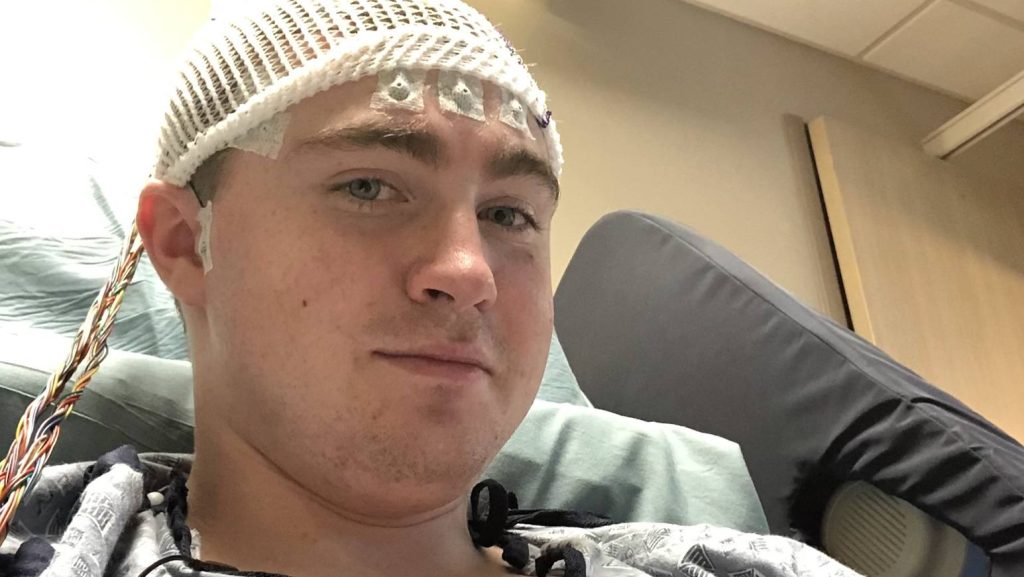
Epilepsy is a neurological condition where the normal electrical activity of the brain is disrupted, causing a seizure. It’s fairly common. According to the Epilepsy Foundation, 1 in 26 people have the disorder: Trevor Thompson is one.
When medications failed to control his seizures, Trevor went looking for help. He found it at Mayo Clinic.
Watch: Laser ablation surgery helps treat young man’s epilepsy
Journalists: Broadcast-quality video (2:22) is in the downloads at the end of this post. Please courtesy: “Mayo Clinic News Network.” Read the script.
Like a lot of 20-year-old guys, Trevor Thompson is into sports and working out.
“I’ve got a hockey game tomorrow night at 10 p.m. that I’m planning to go to. I’ve been lifting weights and going to the gym,” he says.
But Trevor’s active lifestyle came to a screeching halt while he was driving his truck.
“I started to feel a little lightheaded like you do if you get up to fast,” he says. “And then my head moved sort of up and to the left, and I remember seeing the clouds. And then it was like, you know, snap. I wasn’t there anymore.”
Out of the blue, Trevor had an epileptic seizure. How seizures manifest can vary. Some people lose awareness, while others have uncontrolled movements, known as convulsions or spasms.
“Epilepsy can really affect anyone across the age spectrum,” says Dr. Jonathon Parker, a Mayo Clinic neurosurgeon. “Sometimes it can start earlier on in life and get worse over time. Sometimes it can present late in life, and it just has to do with the type of epilepsy and the underlying cause of epilepsy.”

For most people, medication therapy can help control the seizures. But when drugs are not effective, surgery may be an option. In Trevor’s case, doctors at Mayo Clinic used advanced imaging to find the cause of the seizures.
“And they started doing imaging. They were able to tell us pretty quickly what was going on,” Trevor says.
“We saw a very specific abnormality,” says Dr. Parker. “We designed a very precise laser ablation to ablate just the smallest amount of brain that we needed to stop his seizures.”
Laser ablation is a less invasive procedure that uses a laser to pinpoint and destroy a small portion of brain tissue that is causing the seizures. During surgery, doctors use an MRI to guide the laser. Patients typically have a shorter hospital stay and recover more quickly. Laser ablation is just one of several surgical options to treat epilepsy.
“The options that we have are changing. They’re improving year after year,” says Dr. Parker. “And definitely in the last 10 to 15 years, epilepsy surgery has transformed into what I would say is a much more precise, minimally invasive set of techniques and approaches. We can design a personalized approach from a surgical perspective that maximizes their function and optimizes their quality of life.”
“I’m really excited to get back to living the way I always have — all positive, all looking up. Here we are, seizure-free now. So, you know, they did their job, and all’s well that ends well,” Trevor says.
More stories about epilepsy:
- Mayo Clinic Q and A: Advances in care for medication-resistant epilepsy
- Mayo Clinic Minute: A surgery option when epilepsy treatments don’t work
- Mayo Clinic Minute: Demystifying epilepsy
- Responsive neurostimulation helps Carlos Martinez help others with epilepsy




